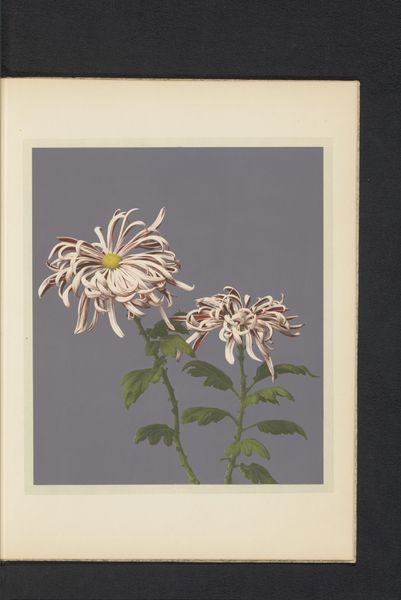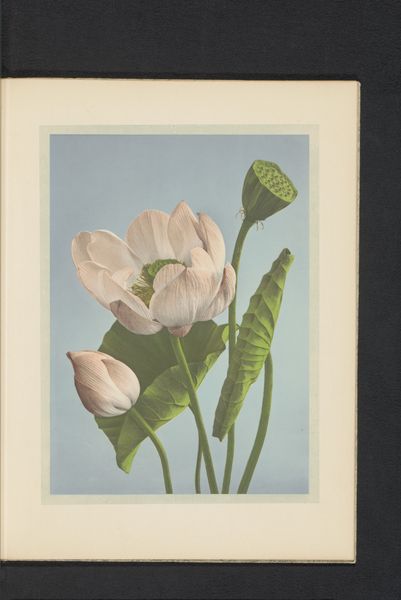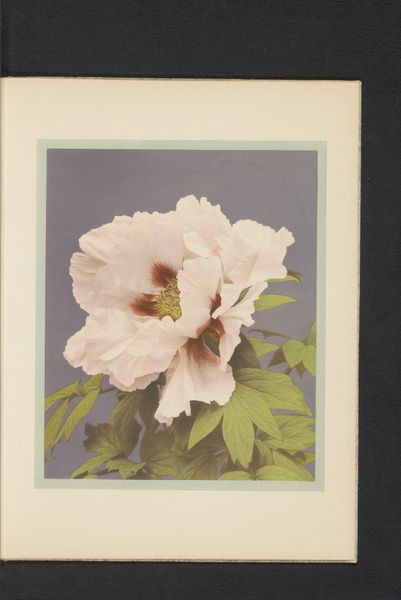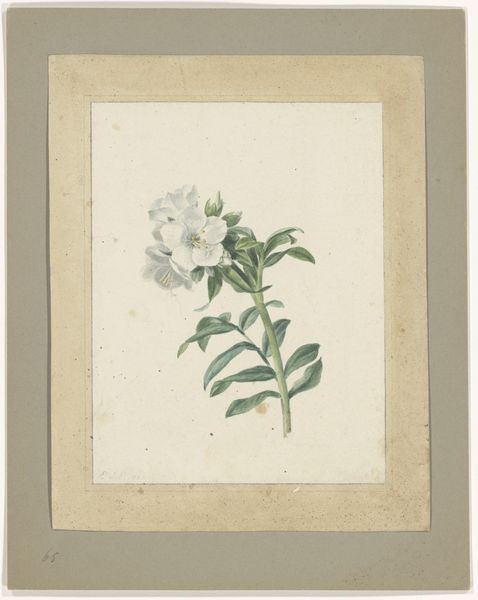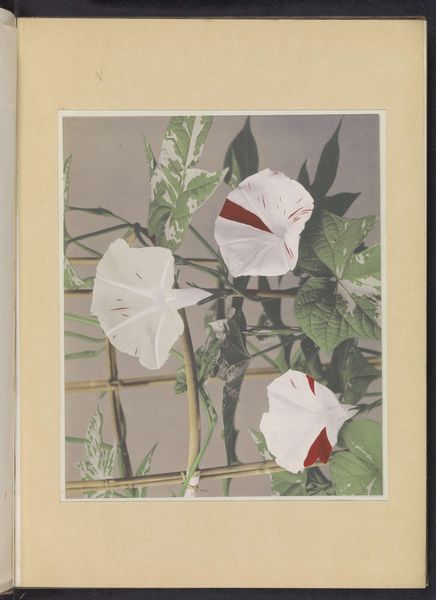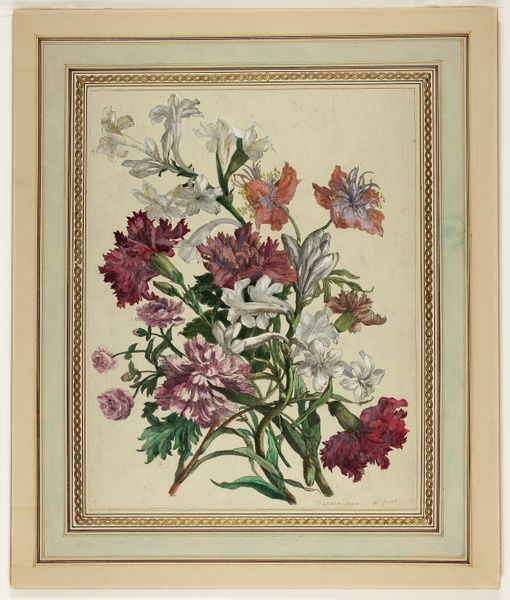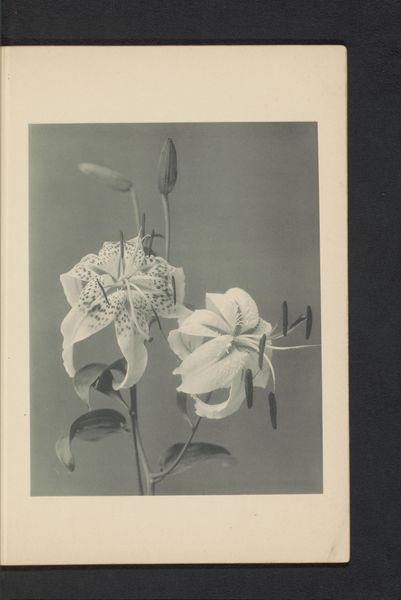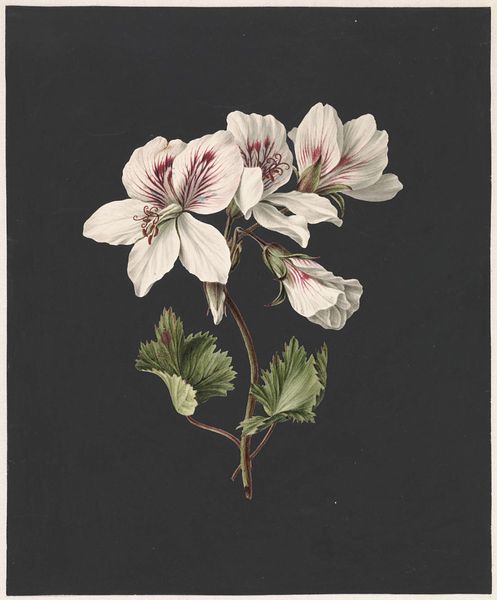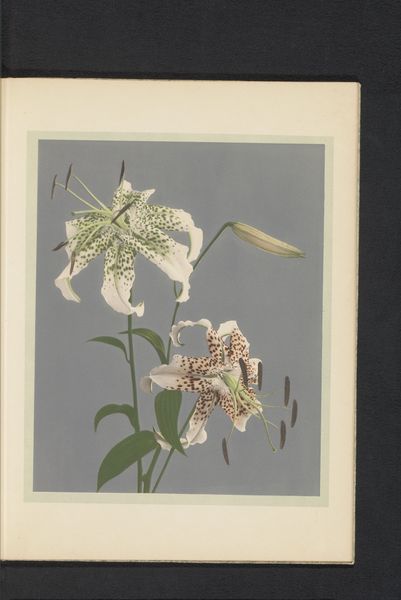
photography
#
still-life
#
photography
#
decorative art
Dimensions: height 280 mm, width 218 mm
Copyright: Rijks Museum: Open Domain
Curator: This exquisite print before us is titled "Camelia japonica of Japanse roos," created before 1895 by Kazumasa Ogawa. Editor: The stripes are incredibly striking. It has a very crisp and vivid effect; I’m immediately drawn in by the layering. Curator: Ogawa was a pioneering photographer and printer. What makes this image particularly interesting is how it intertwines photography and printmaking techniques. His process was innovative for the time. Editor: It is indeed, that hybridity challenges the notion of pure photographic 'truth.’ I'm intrigued by what this chromotypography would mean in terms of artistic labor – how many artisans would be involved, and what the hierarchy might be? Curator: Absolutely, and this artwork falls within the Japonisme movement, revealing the Western fascination with Japanese aesthetics and culture at the time. How the rose is positioned also shows a strong influence from Ukiyo-e prints. Editor: Interesting point. Seeing those production influences invites consideration of the social and cultural circumstances. The use of what looks to be hand-coloring is particularly captivating – how the artisanal skill becomes entwined with photographic processes. Curator: Indeed, it questions traditional notions of artistic skill and craftsmanship within photography itself, blurring the lines between industrial reproduction and hand-made artistry. Also, note the framing and the gray background, atypical of classic Ukiyo-e style, as it lends a modern look. Editor: Yes, it raises significant questions. What kind of emulsion or pigments are used and were they local materials or imports, all of which would affect how it's ultimately presented. It looks meticulously crafted. Curator: Viewing “Camelia japonica”, the careful staging shows how Ogawa skillfully navigated these changing societal expectations, reflecting his distinctive influence. Editor: I am struck by how this combination transforms the simple botanical study into something deeply connected to commerce, skill, and transcultural influence.
Comments
No comments
Be the first to comment and join the conversation on the ultimate creative platform.



